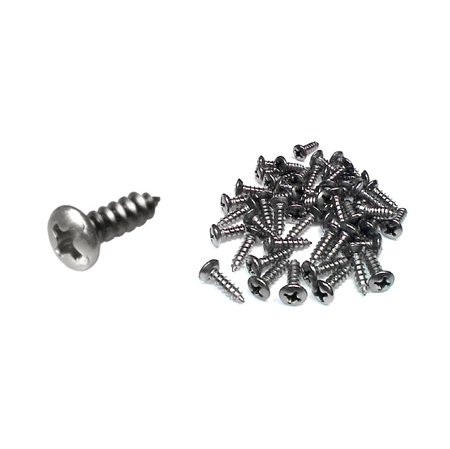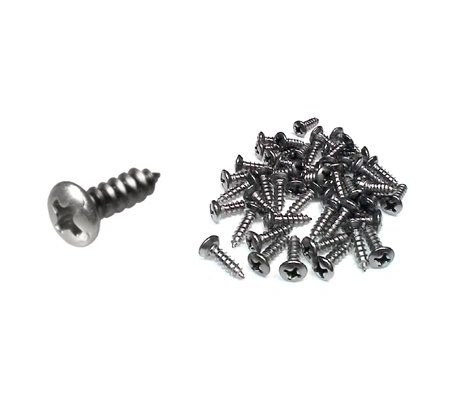
Let’s be real: nobody wants to fuss over hardware, especially when you’ve just installed a brand like Schlage, Defiant, or Kwikset and expected years of smooth use. But here’s the thing—those factory screws might not be built to last against wet boots, muddy paws, or the unpredictable weather that finds a way under doors. If you’re wondering how to keep kick plate screws looking sharp and corrosion-free (without adding “door maintenance” to your weekly to-do list), you’re in the right place.
Why Do Kick Plate Screws Rust So Easily?
To understand how to stop rust, it helps to know why it happens in the first place. Kick plate screws usually live at the very bottom of your door, right where water, slush, and salty grime from shoes collect. It’s basically a spa day for rust—lots of moisture, plus metal, plus oxygen. Result? The screws start corroding, whether you notice or not.
Here’s the thing: most standard screws aren’t made from rust-proof materials. Manufacturers often use ordinary steel, which is strong but susceptible to rust when exposed to moisture. Even if your kick plate itself is “brass” or “stainless,” those tiny screws might just be cheap zinc-coated metal. Over time, scratches, chips, or just old-fashioned humidity can let water in and start the rusting process.
You might be wondering why brands like Schlage or Kwikset often include these basic screws. Honestly, it’s about cost: tossing in higher-grade screws with every product would bump up the price, and most people don’t think about screw longevity until it’s too late. But replacing or protecting them is far easier than dealing with stripped, rusted heads later.
Choose the Right Screws for Lasting Results
Before getting into fancy coatings or DIY hacks, let’s talk about the best starting point: using the right screws from the beginning. If you’re installing a new kick plate (or replacing old screws), this step alone can prevent most rust problems.
Stainless steel screws are the gold standard here. They’re built to resist rust, even in wet or salty environments. For the ultra-cautious, go for “marine-grade” stainless (called 316 stainless). These are the same kind of screws used on boats, so you know they can handle a bit of rainy weather by your door.
If you like the look of brass, solid brass screws are another great pick. Not just brass-plated—real brass holds up better and won’t rust, though it may tarnish over many years. Avoid screws labeled simply “zinc” or “zinc-plated steel.” Those coatings can flake off, exposing the steel beneath to the elements.
Let me explain: swapping out zinc screws for stainless or brass is like trading a paper umbrella for a real raincoat. Sure, both will keep you dry for a minute—but guess which one lasts all season?
Apply Protective Coatings for Extra Defense
If you’re stuck with standard screws, or just want to add an extra layer of protection, coatings are a simple, affordable trick. There are two main approaches: commercial rust-proof sprays and homegrown DIY methods. Both work, but some are better for certain situations.
Rust-inhibiting sprays (like Rust-Oleum) are made for exactly this job. Just unscrew your current hardware, spray an even coat, let it dry, and reinstall. For best results, do two light coats and let it dry fully between layers.
For a budget fix, clear nail polish does a surprisingly good job at sealing out moisture from tiny screws. Simply brush it over the screw heads before installing them. Or, for a classic DIY touch, some folks use a dab of car wax or even a thin layer of petroleum jelly.
- Spray-on coatings: Fast, durable, works on many metals
- Clear nail polish: Precise, quick-dry, best for small batches
- Car wax/petroleum jelly: Temporary fix for emergency jobs
Just remember, no coating lasts forever. Check your screws once or twice a year, especially after winter or heavy rain, and touch them up if you see any chips or cracks in the finish.
Install Screws Properly to Prevent Water Intrusion
Here’s a detail people often miss: how you install those screws actually matters for rust prevention. When screws aren’t seated firmly, or if they’re at an angle, tiny gaps form around them. These gaps act like little water highways, funneling moisture behind the kick plate—prime territory for hidden rust.
Always use a screwdriver that’s the right size for your screw heads. Power drills can strip metal or over-tighten, damaging the protective coating. For most brands—Schlage, Defiant, or generic home center plates—a handheld screwdriver gives you more control and helps keep the coating intact.
Some pros recommend adding a dab of silicone sealant under the screw head before tightening. This creates a water-tight barrier and keeps water from sneaking behind the hardware. You don’t need much—just a pea-sized drop on each screw.
Honestly, the effort you put into a careful install now will pay back tenfold down the line. It’s like tying your shoelaces tight before a rainy walk—annoying for a second, but you’ll be glad you did.
Clean and Maintain Kick Plate Screws Regularly
The best way to keep screws rust-free is a little regular maintenance. You don’t have to obsess over them, but making a habit of checking your door’s kick plate every few months saves you hassle later.
Start by wiping down the kick plate and screws with a dry cloth. Look for any signs of rust, pitting, or discoloration. If you see early rust spots, gently scrub them with a bit of baking soda paste and an old toothbrush (nothing too abrasive). Rinse, dry, and reapply your protective coating if needed.
Here’s a pro tip: after heavy rain, snow, or salt exposure (especially in winter), most hardware could use a quick once-over. Sometimes, all it takes is a minute to wipe off wetness and prevent rust from even starting.
If you’re in a really humid climate, or your door gets splashed often—maybe you have kids tracking in puddles, or your entry faces driving rain—it might be worth scheduling a kick plate check every time you do a battery swap or remote sync for your home security system. Treat it like a regular part of your home troubleshooting routine.
Compare Universal vs. Brand-Specific Kick Plate Screws
You might be wondering if it matters which screws you buy for your kick plate. Is it really worth hunting down a specific Schlage or Kwikset set, or will a universal screw kit do the job?
In general, brand-specific screws are designed to match the finish and size of the kick plate. They might have extra corrosion resistance, better color matching, or heads that sit flush for a cleaner appearance. But, as with most hardware, you’re paying a little extra for the perfect fit.
Universal kick plate screws are widely available and can save you money. Just double check the size (length and thread type) and finish so they don’t look out of place. Many universal kits now come with stainless steel options, which actually hold up better than some brand originals.
Here’s the bottom line: unless your kick plate has a unique shape or finish, a high-quality universal stainless steel screw will almost always outlast a standard “matching” screw made of cheaper metal. Don’t be afraid to mix and match for the sake of durability.
Know When to Replace Rusty Screws (And How to Do It)
Sometimes, despite your best efforts, screws will eventually rust. When that happens, it’s important to replace them sooner rather than later. Rusty screws can stain your door, damage the surrounding area, and even weaken the kick plate’s security.
Start by removing one screw at a time so the plate stays aligned. If a screw is stuck due to corrosion, spray a little penetrating oil (like WD-40) and wait a few minutes before trying again. Use a screwdriver with a good grip to avoid stripping the head. If a screw is too far gone, a screw extractor tool can save the day.
Once the old screw is out, check the hole for rust. Clean it out with a small brush and, if needed, fill in with a touch of wood filler before installing the new one. Always use your preferred rust-proof screw and add a protective coating during installation.
Think of it like changing the batteries in your remote: a quick fix now keeps things running smoothly and avoids bigger headaches later.
Alternative Solutions If Rust Keeps Returning
If you’ve tried everything and your kick plate screws still keep rusting, don’t throw in the towel—there are a few creative alternatives worth considering.
Some homeowners switch to plastic or nylon screws. While these aren’t as strong as metal, they’re completely rust-proof and often sturdy enough for a non-load-bearing plate. They also come in a range of colors to match most doors.
Another option is to install decorative screw covers. These snap on over the heads of your metal screws, creating a physical barrier that keeps out water and air. They’re available in different finishes, so your hardware still looks polished.
If all else fails, consider upgrading your entire kick plate to a style with a more enclosed mounting design—where the hardware is hidden or protected from direct exposure.
Keep Your Kick Plate Screws Rust-Free for Good
Rusty kick plate screws might seem like a small issue, but they can spoil the look and function of your door surprisingly fast. Luckily, with the right screws, a bit of thoughtful installation, and an occasional checkup, you can keep them looking new for years—no matter what shoes, paws, or storms throw at your entryway.
Whether you’re swapping in stainless options, adding a coat of protection, or just making a habit out of a quick visual inspection, each step makes your home a little more welcoming and a lot less rusty. And honestly, that’s worth a few minutes of your time—even if you’d rather be debugging code, syncing a new remote, or just enjoying a rust-free afternoon.
